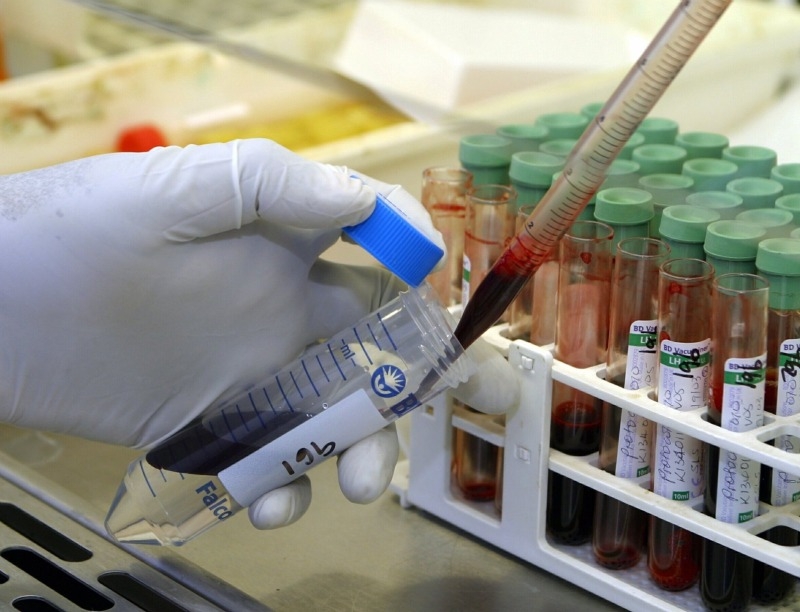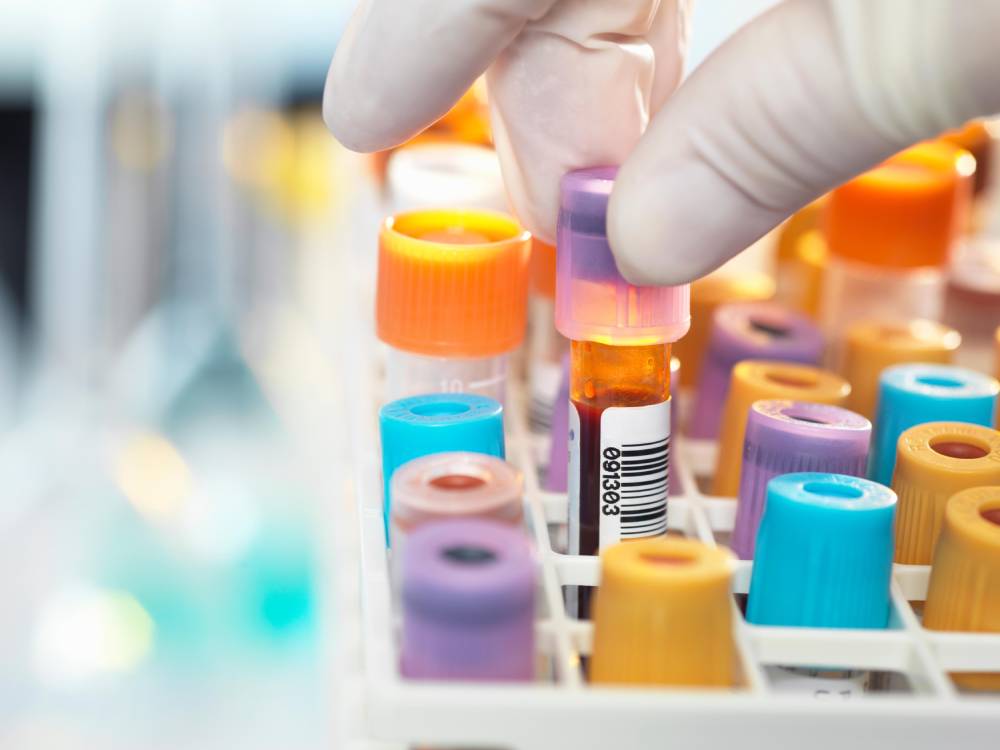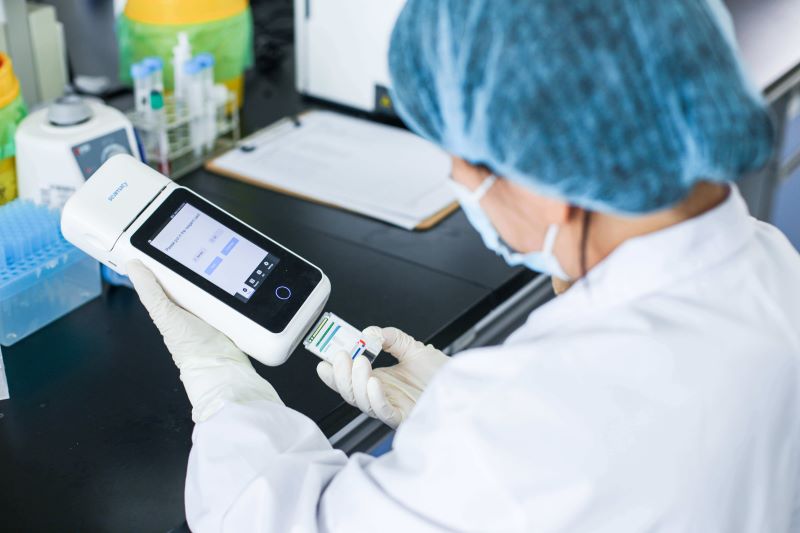Introduction
Blood gas analyzers are essential medical devices used to measure the levels of oxygen, carbon dioxide, and other critical parameters in a patient’s blood.These machines are invaluable for diagnosing and monitoring various medical conditions.However, like any complex medical equipment, blood gas analyzers can experience common issues that affect their accuracy and reliability.This article explores some of the common problems associated with blood gas analyzers and offers essential precautions to ensure their proper functioning.
What Are The Common Malfunctions Of Blood Gas Analyzers?
1.During the calibration or sample injection test, it shows that the calibration solution or sample cannot be detected
It may be caused by the wear and aging of the peristaltic pump tube or the slow speed of the peristaltic pump. If the pump tube of the blood gas analyzer has been used for a long time, the wear and elasticity are insufficient, and the calibrator or sample cannot be drawn. The pump tube can be removed, rinsed with 10% sodium hypochlorite solution with a syringe, rinsed with distilled water, and put back. If the wear is serious, the pump tube should be replaced with a new one.
If it is found that the peristaltic pump speed of the blood gas analyzer is abnormal, you can adjust the working voltage of the peristaltic pump: open the rear panel of the blood gas analyzer, select reagent test in the service test menu, and make the peristaltic pump run at a low speed. The peristaltic pump runs at high speed and adjusts the voltage of the potentiometer.

If the sample detector is dirty or damaged, select the sensor in the service menu, the screen shows that the voltage value when the air passes through the sample sensor should be 1.5~2.6V, not less than 1.0V; press the test button, the voltage will be displayed when the cleaning solution passes through the sample sensor Should be 0.2 ~ 0.3V, not more than 0.5V. If it is out of range, take out the sample sensor, rinse it with 10% sodium hypochlorite solution, and then rinse it with distilled water. After putting it back, open the right panel of the blood gas analyzer, adjust the potentiometer TR1, so that the voltage value when the air passes through the sample sensor is 2.0-2.3V; press the test button again, and the voltage of the cleaning solution passing through the sample sensor is displayed as 0.2-0.5V. If out of range, the sample sensor should be replaced.
2.After the blood gas analyzer is calibrated, the oxygen electrode, carbon dioxide electrode or pH electrode shows a wrong voltage range or wrong electrode slope
①The oxygen electrode voltage range is ±3.0V, and the slope range is 75% to 230%. The reason for exceeding the range is usually that the filling liquid in the electrode evaporates to produce bubbles, or the electrode membrane sleeve is dirty and aging, resulting in a decrease in sensitivity.
Treatment method: Take out the oxygen electrode and observe whether there are air bubbles in the oxygen electrode membrane sleeve. If there are, replace with a new filling liquid, flick the electrode with your fingers to remove air bubbles, put it back, and perform calibration. If the fault is not eliminated, select air in the service menu of the blood gas analyzer, and the displayed oxygen electrode voltage should be -0.5~+0.1V. Disconnect the connection line of the oxygen electrode, and the zero point voltage value of the oxygen electrode should be -1.700V, with a deviation of ±20mV. If it exceeds the range, adjust the potentiometer OFFSET on the analog circuit board of the blood gas analyzer to make the screen display voltage be -1.700V, and adjust the trimmer potentiometer POL (point of load) so that the voltage of the oxygen electrode connection line to ground, that is, the polarization voltage, is 0.800V. Carry out the calibration, if the fault persists, the oxygen electrode membrane sleeve must be replaced.

②The carbon dioxide electrode voltage range is ±3.5V; the slope range is 50% to 110%. Out of range is usually caused by air bubbles in the electrode, or aging of the electrode membrane sleeve.
Treatment method: Take out the carbon dioxide electrode and observe whether there are air bubbles in the electrode membrane sleeve. If there is, replace the inner filling liquid with a new one, flick the electrode with your finger to remove the air bubbles, and put it back; select the calibrator in the service menu of the blood gas analyzer, It shows that the carbon dioxide electrode voltage should be in the range of ±3.5V, and it should be stable within 60s, and the deviation is within ±10mV. If it exceeds the range, replace the carbon dioxide electrode membrane sleeve.
③The pH electrode voltage range is ±3.5V, and the slope range is 86% to 110%. Out of range is usually caused by the dirty glass membrane of the pH electrode, or due to air bubbles in the reference electrode and aging of the electrode membrane sleeve.
Treatment method: Take out the pH electrode, wipe the electrode glass membrane with a soft cloth dipped in electrode cleaning solution, and put it back. Take out the reference electrode and observe whether there are air bubbles in the electrode membrane sleeve. If so, replace the filling liquid in the reference electrode, flick the electrode with your finger to remove the air bubbles, put it back, and perform calibration. If the fault persists, the reference electrode membrane sleeve must be replaced.

3.The temperature of the measuring chamber of the blood gas analyzer exceeds (37±0.2)℃
The use of the blood gas analyzer requires an ambient temperature of 5-32°C and a relative humidity of 30%-90%. When the environment changes, the cooling fan of the blood gas analyzer fails, the front mask of the blood gas analyzer is not installed, etc., the temperature of the measurement chamber is out of range, and the temperature deviation will cause all test results to be wrong.
Treatment method: Install the front cover and clean the cooling fan filter on the back of the blood gas analyzer. There is a temperature adjustment potentiometer under the front cover of the blood gas analyzer and on the right side of the heating indicator light, which can be adjusted. Adjust the temperature clockwise to increase, and counterclockwise to adjust the temperature to decrease. Because the temperature response lags, the adjustment range should be small. After adjustment, the temperature of the measurement chamber can return to normal.
What Precautions Should Be Taken When Using Blood Gas Analyzers?
1.Blood collection location: If there is infusion in the blood collection artery, hemolysis and dilution may occur, which will increase K+ and decrease Ca2+. If it is mistakenly collected as venous blood, because venous blood cannot accurately reflect the state of arterial blood gas, its pH value is close to that of arterial blood under normal conditions, but when the body is sick, various metabolisms are hindered to varying degrees. There is a significant difference in pH between arteries and veins.
2.Blood sampling volume and heparin concentration: Heparin concentration is the core guarantee for accurate blood gas analysis results. Excessive heparin dosage can cause dilution errors, resulting in low pH and PaO2 values and high PaCO2 values, resulting in false hypocapnia. However, if the amount of heparin is too small, it will not have the effect of anticoagulation. The International Federation of Biochemistry (IFCC) recommends that the final concentration of heparin in blood gas samples be 50 u/ml.

3.Air bubbles: Because air bubbles will affect the test results of blood gas pH, PaCO2, and PaO2, especially the PaO2 value. An ideal blood gas sample should have less than 5% air bubbles.
4.Degree of specimen mixing: Like other anticoagulated specimens, insufficient mixing will increase the occurrence of coagulation, thereby affecting the accuracy of hemoglobin and hematocrit results.
5.Specimen storage: For lactic acid detection specimens, they must be stored in ice water before detection. Other test items can be stored at room temperature or in ice water for 1 h.
6.Delivery time of specimens: PaCO2, PaO2 and lactic acid tests must be completed within 15 minutes, and other items such as pH, electrolytes, BUN, hemoglobin, blood sugar and hematocrit must be completed within 1 hour.
Conclusion
Blood gas analyzers are indispensable tools in critical care settings, providing essential information for diagnosing and treating patients.However, to ensure accurate and reliable results, healthcare facilities must be proactive in addressing common issues and adhering to stringent precautions.By following these guidelines, medical professionals can maintain the integrity of blood gas analyzer measurements, ultimately improving patient care and outcomes.
Why Choose Us?

CNMEDITECH is dedicated to the long-term research of the blood gas analyzer market. Our mission is “People oriented and win-win strategy,Matching the real needs of the region with a focus on human health,To be the world’s first-class medical field solution expert”. We have been manufacturing high-quality medical device products for more than ten years.
We have built our reputation on delivering quality healthcare solutions on time and on budget. All our products comply with international health and safety regulations and all products come with a warranty.
Are you still worrying about your customer’s product needs? Are you still angry that the product is expensive?Our blood gas analyzers have various models and support personalized product customization.
Our company has many styles to choose from. In addition, we have high-quality pre-sales consulting guidance and professional after-sales service, all to meet your needs.
Whether it is a cost-effective or high-end product, there will always be something suitable for you. If you have any needs for products, you can ask us, our factory will meet your needs as soon as possible, and we will make every effort to provide you with solutions.Feel free to send us your inquiries.
